Another Dead Button: Google Plus Removes Share Counts
Published by Drew Hendricks • Social Media • Posted September 14, 2017 ContentPowered.com
ContentPowered.com
Two years ago, Twitter pushed an update to the architecture that ran their servers. Changing from one system to another largely allowed the site to run more smoothly, to handle more advanced features, and got rid of dead code that could potentially have been used for bugs, exploits, or just legacy features no one cared about.
However, as a side effect of this change, something awful happened. As marketers discovered, and much to our dismay, the ability to pull the share count for a URL disappeared.
The Twitter API in use for social sharing counts was, in fact, never an API at all. It was a relic of how Twitter processed and handled data at the time. When they changed architecture, they didn’t maintain this method of data handling, and instead changed to something else entirely. It’s beneficial for them, but it left bloggers and marketers in a lurch.
Without this fake API, there was no way to pull Twitter sharing data for sites and URLs. There was no way to display that number next to Twitter in the sharing button plugins we all use.
In these past two years, some developers have come up with ways to harvest Twitter share count data, though it’s not as smooth as an API, or even a pseudo-API like what Twitter had before. Some social sharing plugins have updated to display counts through these services. Others removed the ability to display counts from Twitter, and some removed counts from every social network, choosing instead to just be uniform logo-based buttons.
There was a scare for a while about Facebook doing the same thing, due to the way their APIs update on a rolling basis. For a short few months, Facebook data was hard to come by, though it has largely been restored through the major plugins by today.
Which, of course, brings us to the point of this whole history lesson; it’s repeating. Only this time, instead of Twitter or Facebook, it’s Google+.
In a blog post published in the middle of June this year, John Nack announced that the Google+ button – the G+ button provided for blogs to share their +1 count – is changing.
“The G+1 button is shown billions of times per day on web pages around the world, so it’s important that it load as quickly and efficiently as possible. To make it easier for people to load and share the pages they’re interested in, we’ve created a simpler G+1 button sharing experience. Beginning in a few weeks, clicking the +1 button will open a streamlined new Google+ sharing dialog, and the G+1 button will no longer display a +1 count.”
So, a simpler share button means the Google +1 button, without any count attached to it.
The Troubled Times of Google Plus
Google+ was launched in June of 2011, and it was immediately and heavily pushed as a Facebook Killer. Google wanted in on that delicious social space, and all of the popularity, data access, and monetization options is supplied. With their power and their money, it seemed like it could never fail.
Of course, that’s ignoring that Google had tried three other social networks prior to Google+. Remember Google Buzz, or Google Friend Connect? Orkut at least had some traction before it was retired, but largely in South America.
The trouble with Google+ was how much it was, well, shoved in the faces of virtually everyone. There was a time when you could barely use a Google service without bring prompted to make a Google+ account, or claim your existing account as provided by having a Google account on its own.
Thus it looked like Google+ had some astonishing growth, but when you looked a little deeper, you found the sinister undertones. How many thousands of people signed up for Google+ because they couldn’t watch YouTube without being hassled every time they logged in? How many people set up their Google+ accounts on the assumption that they would gain value from Authorship? How many brands signed up just to claim their names, ready to adopt if and only if the site truly took off?
Google+ might have a high monthly active user element, but again, much of that simply read from other Google services. User engagement, as measured by ComScore, was somewhere around 3.3 minutes for Google+, as opposed to 7.5 hours for Facebook. The New York Times even called the site a ghost town, noting that even if they have hundreds of millions of monthly active users, many of those users never actually visit the site.
By now, much of Google+ has been gutted. One of the best features was Hangouts, but it has been moved to its own product mixed in with Gmail, and has actually been removed from Google+ itself. Today, Google+ might have some use, but it’s primarily as a sort of techno-hipster Babylon, as crumbled ruin of a once-mighty edifice built on hubris and worshiped only by those too stuck in their ways to realize their deity has long left.
One of the few things keeping Google+ alive, as far as I’m concerned, is the +1 button for blogs. Google+ shares, or +1s, are just another element of social proof for bloggers. There’s nothing inherently better about a +1 than a Facebook like or a LinkedIn share. It’s just that it gave users one more option, and gave bloggers one more number to optimize.
Even that, though, had some issues. In fact, one issue with the +1 button is actually honesty. We all talk about social proof as being important when it’s valid, and to avoid buying likes to inflate the number, but Google actually inflated the number for some people as a baseline. Essentially, if you adopted Google+ early and had a classic page, followers would be automatically added to any Google+ total. I’m not actually sure how big an issue this is, or rather was, because it frankly never mattered enough to investigate.
Another is, well, just look at that announcement itself. You would think a Google announcement of something this important – if it truly is important – would be flooded with marketers talking about it. Instead you have half a dozen actually discussing the issue, and about 50 comments that amount to spam in foreign languages. Yes, a few of them are “thanks for the announcement, this is a necessary change” or thereabouts, but some of them are just trash. Why did someone comment “wwwgoogleplas” and why did someone post a video of their family eating dinner? Quality shares, there, and all would be recorded as +1s.
Twitter removing share counts is, well, reasonable. Even if a lot of bloggers feel they need the shared count, Twitter is well within their right to remove what was essentially unauthorized access to data. They are also perfectly within their right to not spend time and money developing a replacement to a feature they never technically had.
Of course, Twitter has a long history of making decisions that are arguably bad for their site as a whole, compromising either a primary use case or a part of brand identity. It’s not out of the ordinary, and anyway, an alternative exists and has not been shut down.
Google+ doing the same thing, though, reeks of the slow decline of yet another Google service. I don’t know about you, but the idea that Google, of all companies, is worried enough about the speed of their dinky little button to make a major change that is 100% guaranteed to piss off a large portion of their userbase… it’s not a very good excuse.
Later in the comment thread for that post, Nack comes back to say that “The counts aren’t valuable to most publisher (most of whom no longer display them), so we think it’s smarter to direct our resources towards more beneficial work.”
There are two primary causes for concern here.
The first is that this is a very Google-ish thing to say as a way to rationalize a decision that leads to the slow rolling up of the carpet. Google+ was a testing ground for a lot of features. The ones that have succeeded have been extracted and either rolled into other services or made into stand-alone products. It seems to me that Google+ is going to be left to stagnate for maybe a year or two, and then it will be unceremoniously retired.
Even if Google decides not to kill Google+ outright, I might expect some sort of product merger. Google+ has one remaining major use case, as a sort of blog and social hybrid, so they might try to merge it with Blogger. I can’t tell you for sure which direction they will go, but one thing’s for sure; the slow removal of the importance of Google+, coupled with the statement that they are “directing their resources towards more beneficial work” makes me thing the days of Google+ are numbered.
And you know what? That’s fine. Google+ was an experiment that, much like the other Google social experiments, has not gone particularly as well as they might have wanted it to. It’s a proxy for a social network more than it is a social network itself. It has served its purpose, and maybe Google will move on to debut another new social product, possibly something mobile-focused to compete with the likes of Snapchat and Instagram. A few years too late, but that’s what Google does, isn’t it?
The second cause for concern is the more pressing matter.
- Twitter kills share counts: everyone panics and rushes to restore them.
- Facebook temporarily kills share counts: everyone panics and they are restored, but there are more posts rationalizing the removal of share counts entirely.
- Google removes share counts. Fewer people panic, because of all of the share counts available, theirs was arguably one of the least influential. Plus, those rationalizations really are accurate.
- What’s next?
This could be encouraging news for other social networks. It wouldn’t surprise me to see another tertiary social network, like LinkedIn, removing the counts next. It could also be fuel to help Facebook make the decision to remove counts, possibly by introducing something clunky but interesting to replace them.
What Now?
In the immediate future, what you’ll notice is that your Google+ buttons will no longer display a number. Depending on what service you use for your social sharing buttons, they might display a 0 or a -, or they might just display nothing at all. Very rarely will they break; at this point after the Twitter fiasco you would have swapped to a better plugin already.
The lack of numbers might lead to fewer people joining the “me too” crowd and sharing because the post is already popular. Alternatively, it might not; different sites will experience different repercussions. Blogger sites might be hurt more, since Google+ sharing is the default rather than just another plugin. Some sites that thrive on the social proof inherent in large numbers might find a dip in income coming.
Those of you who have businesses that rely on selling social shares on Google+, or who rely on showing share counts – like social sharing plugin developers – might have a dip in business. It’s hard to promise to deliver 1,000 shares when there’s little way to verify it, right?
From there, it’s up in the air. There’s a small chance Google will see the backlash and will walk back the change, or improve their button to provide share counts while being faster. If so, they were being upfront and they plan to keep Google+ around. I doubt this will happen.
Alternatively, some developers – I’m looking at Social Warfare in particular – will find a way to harvest the share count data to keep their plugin operating. SW did it for Twitter and they might do it for Google+, if demand is high enough.
Or, of course, they might not. It might be time to remove the share counts from all your buttons, or remove Google+ from the list of buttons you display, depending on how much value you ever got out of it in the first place.
Personally, unless you have heavy investment in Google+, I figure it’s time to remove the option entirely. Ditch the share count, or the button entirely. You can even swap to an alternative, like MashShare, that shows a single aggregated share count. Either way, it’s time to adapt.

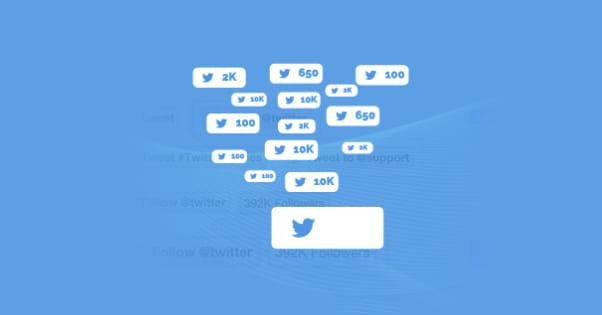
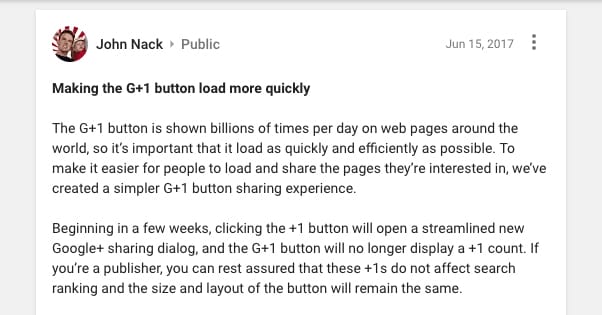
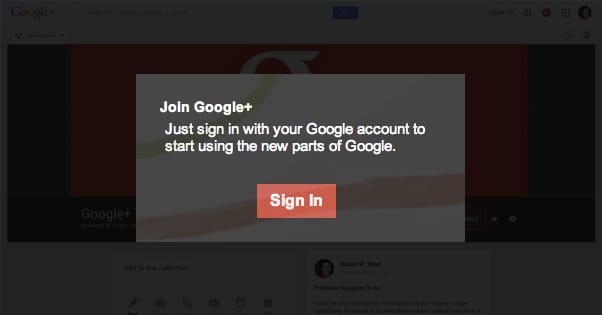
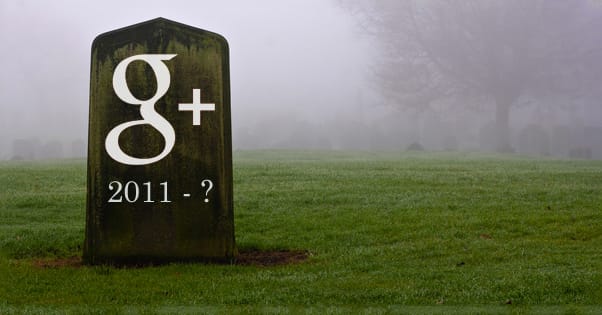
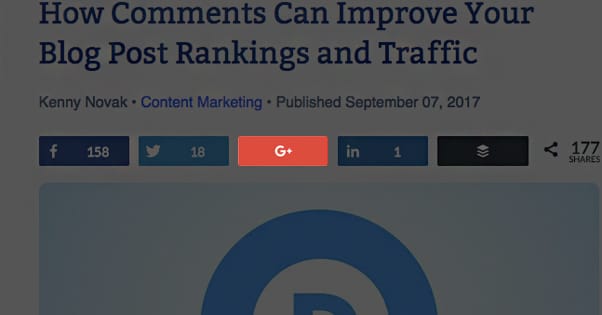

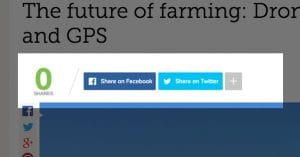
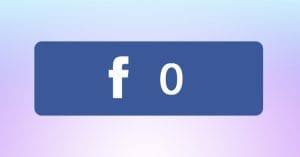
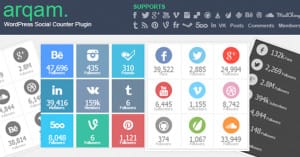
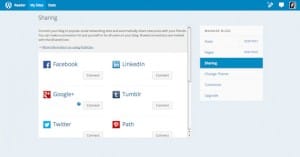
what share buttons do you use?